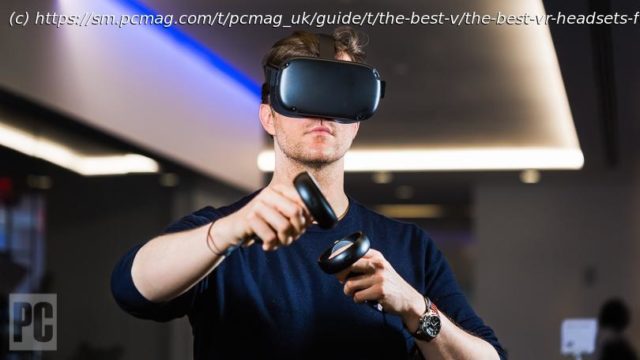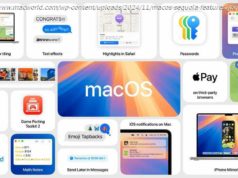Whether you’re looking for a standalone headset or one that tethers to your PC or console, we’ve tested the best virtual reality headsets and platforms to help figure out which, if any, is right for you.
How to Choose the Right VR
Virtual Reality is a fascinating way to travel using nothing more than the power of technology. With a headset and motion tracking, VR lets you look around a virtual space as if you’re actually there, or play a game like you’re really in it. It’s been gaining traction in recent years thanks to some very compelling games and experiences, though it still seems very much in a state of flux, with headsets coming and going fairly rapidly. We’re tracking the best of what’s currently on the market here.
Oculus has both tethered and standalone headsets in the form of the Quest and the Rift S. HTC has the Steam-friendly Vive Cosmos and the developer-focused Vive Pro. Sony has the PS4-focused PlayStation VR, and Microsoft is supporting its Windows Mixed Reality platform with a few third-party headsets. There’s also Valve, with its expensive Valve Index headset providing the only taste of a new Half-Life game (Alyx) we’ve gotten in over a decade in the form. Here’s what you need to know about all of them.
The Big Question: What VR Is the Best?
Modern VR headsets now fit under one of two categories: tethered or standalone. Tethered headsets like the Oculus Rift S, the HTC Vive Cosmos, and the PlayStation VR are physically connected to PCs (or in the case of the PS VR, a PlayStation 4). The cable makes them a bit unwieldy, but putting all of the actual video processing in a box you don’t need to directly strap to your face means your VR experience can be a lot more complex. The use of a dedicated display in the headset instead of your smartphone drastically improves image fidelity, and either external sensors or outward-facing cameras on the headset provide full 6DOF (six degrees of freedom) movement tracking.
The Best VR Headset Deals This Week*
HTC Vive Pro Starter Edition With Two-Months Viveport Infinity Subscription
$999.99
(List Price $999.99; Save $200.99)
Zeiss VR One Plus Virtual Reality Headset
— $47.99
(List Price $59.99; Save $12)
Homido V2 Virtual Reality Headset
— $63.99
(List Price $79.99; Save $16)
*Deals are selected by our partner, TechBargains
The least expensive tethered options are currently around $400, and that’s before you address the processing issue; the Rift S and Vive headsets need pretty powerful PCs to run, while the PS VR requires a PlayStation 4.
Standalone headsets offer the greatest physical freedom by building The Quest uses similar outward-facing cameras to the Rift S to provide 6DOF motion tracking, and uses the same Oculus Touch motion controls. Combined with a faster Snapdragon 835 processor compared with the Oculus Go’s Snapdragon 821, the Quest offers a much more compelling and immersive VR experience, all without the unwieldy cable or PC requirement of the Rift S.
We hope to see more standalone 6DOF, dual motion controller headsets in the future, but few consumer models have been released in North America so far. Oculus: Rift S and Quest
The Oculus Rift was the first big name in the current wave of VR, and it’s still a major player with both a tethered and standalone headset. The Rift S is the tethered Oculus headset, connecting to your PC over DisplayPort and accessing a wide selection of VR games on PC through the Oculus Store and SteamVR. It abandons external cameras in favor of a pair of outward-facing cameras for motion tracking, which means fewer cables to deal with.
The Oculus Quest, on the other hand, is an all-in-one VR headset with a Snapdragon 835 processor. It doesn’t have nearly the processing power as a Rift S tethered to a gaming PC, but it also doesn’t need cables at all, and fully supports 6DOF motion tracking with dual motion controllers (the same controllers as the Rift S). It doesn’t have the same software selection as the PC-based Rift S and its much bigger Oculus Store, but it still offers hundreds of different experiences including some very compelling games like Beat Saber and Superhot VR. It’s also currently the only VR platform that can use Spatial, an intriguing new VR teleconferencing service with free access for consumers.
Oculus did offer a simpler, less expensive standalone VR headset in the Oculus Go, but it recently discontinued that model. The Go was an affordable, $200 all-in-one headset that offered a solid taste of VR, but only had 3DOF (three degrees of freedom) motion sensing and a single directional remote, so it was much more limited than the Quest, which has surpassed it. Sony PlayStation VR
The PlayStation VR is compelling thanks to Sony backing development for it and the affordability and availability of the PlayStation 4 compared with gaming PCs.






